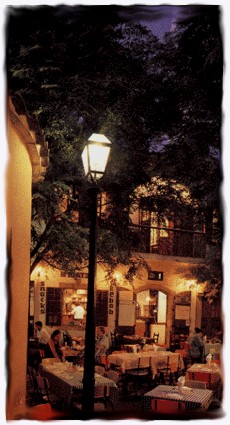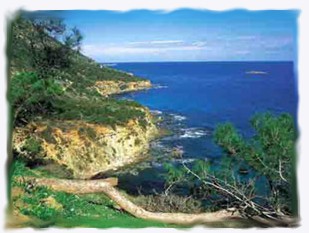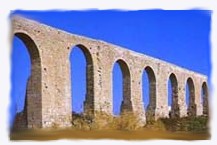 |
 |
 |
 |
 |
 |
 |
 |
 |
 |
 |
 |
 |
 |
 |
 |
 |
 |
 |
 |
 |
 |
 |
 |
 |
 |
 |
 |
 |
 |
 |
 |
 |
 |
 |
 |
 |
 |
 |
 |
 |
 |
|
 |
 |
 |
|
|
|
 |
|
|
 |
|
|
|
NICOSIA |
|
|
|
Lefkosia, the capital of Cyprus is better known to foreigners by its mediaeval name, Nicosia. It lies just to the north of the geographical centre of the island at an elevation of 160 metres and is being traversed by the seasonal stream of Pediaios. The city has a population of about 230.000, by far the biggest on the island. 195,300 live in the government-controlled southern quarter while the rest live in the Turkish-occupied northern quarter. |
|
 |
|
|
|
|
LIMASSOL |
|
|
|
|
|
|
|
The city of Lemesos (Limassol) is situated in a picturesque location on the shores of the Bay of Akrotiri in the narrow coastal plain, between the two ancient city kingdoms of Amathus to the east and Kourion to the west. It is within an hour's drive from the capital Lefkosia to the north, the port cities of Larnaka to the east and Pafos to the west and the main mountain resorts of the Troodos range.
In the city's environs there are numerous archaeological sites to visit covering the whole spectrum of the island's history and even pre-history from the neolithic settlement at Sotera, to Roman Kourion, to Mediaeval Kolossi Castle, to Byzantine churches. Then there are the picturesque villages on the mountain slopes, known the world over for their excellent wines, including the famous Commandaria. Higher up the mountains still is the summer resort of Platres and the Monastery of Trooditissa among the pine forests of the Troodos massif.
Lemesos is today the island's second largest city with a population of 155.500, the most important tourist and commercial centre and the biggest port. |
|
|
|
Lefkosia hosts the seat of government, the House of Representatives, the Supreme Court, the Archbishopric of the Greek Orthodox Church, government services and foreign embassies, high commissions and consulates. Lefkosia also has an International Airport about 8 km west of the city centre, which remains closed since the 1974 Turkish-invasion as it is lying in the UN-controlled "buffer zone".
Lefkosia has the unenviable legacy of being the last divided capital of Europe, and indeed the world, following the fall of the Berlin Wall in 1989 and the reconciliation of feuding factions in Beirut in the early 1990s. |
|
|
|
|
|
|
 |
|
|
|
|
|
|
|
|
|
 |
|
|
|
PAFOS |
|
|
|
|
|
|
|
The city of Pafos, on the southwest coast of the island, is, according to legend the birthplace of the Greek Goddess of Love, Aphrodite. It was founded by King Kinyras in 1400 BC. The port of Pafos was built by Nicocles, the last king of Pafos, at the time of Alexander the Great. It became the capital of the island replacing Salamis during the Hellenistic Period as its masters, the Ptolemies, favoured a location closer to their capital, Alexandria. The Romans retained Pafos as the seat of the Roman Governor. It was here that Apostle Paul converted the Roman Governor of the time, Sergius Paulus, to Christianity. The city contains many catacomb sites dating back to the early Christian period.
Despite its vulnerability to foreign incursions and raids, the city survived through the centuries, retaining an indefinable, legendary charm through the ages. It even survived the devastating earthquake in the 4th century AD. |
|
|
|
|
|
|
 |
|
|
|
|
|
|
|
|
 |
|
LARNACA |
|
|
|
|
|
|
|
The modern city of Larnaka is built on the shores of the Bay of Larnaka in the SE of the island, a few kilometres to the north of the ancient kingdom of Kition.It is characterized by low relief as no part of the city has an elevation of more than 50 metres. It has a population of 68.800 and ranks third in size among the island's settlements, after Lefkosia and Lemesos. Almost half of the inhabitants of the city are refugees , mainly from neighbouring Ammochostos district.
Throughout the centuries, Kition had remained one of Cyprus's main city-states, enjoying periods of prosperity when trade was flourishing. It is connected with important milestones in the island's history which include the liberation of the city from the Persian yoke by the Athenian General Kimon, and the presence in the city of Lazarus, the man Jesus Christ brought back from the dead. The vulnerability of the city to earthquakes, floods and raids contributed to its decline during the Middle Ages.
The city of Larnaka is well-known for its picturesque sea-front which includes rows of palm trees, oi finikoudes, in the local Greek dialect. Much of the activity is centred around the city promenade during the major festivals. The most important of these for the city of Larnaka is Kataklysmos or the Festival of the Flood, celebrated in early summer with a series of cultural events. |
|
|
|
|
|
|
|
Today Pafos is a popular sea resort with a population of 39.500. It is divided into two major quarters - Ktima, on the sea terrace, is the main residential district, and Kato Pafos, by the sea, is built around the mediaeval port and contains most of the luxury hotels and the entertainment infrastructure of the city. |
|
|
|
 |
|
|
|
|
|
|
 |
|
|
|
|
 |
|
|
|
|
|
|
|







